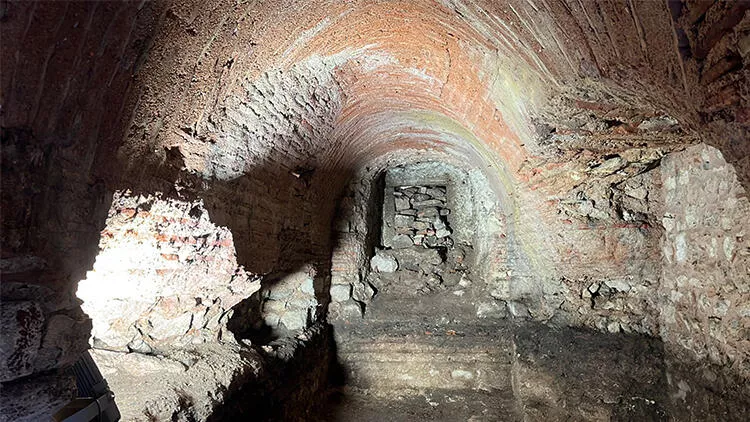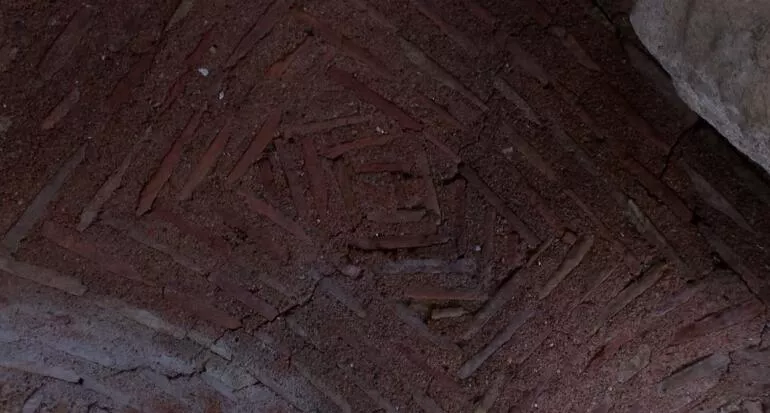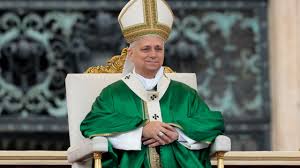1,500-Year-Old Underground Hallway Found in Istanbul


A 1,500-year-old underground passage was found in the excavations carried out by the Istanbul Metropolitan Municipality (IMM) in the remains of the 500-year-old Polyeuktos Church, located opposite the building in Saraçhane. Mahir Polat, Deputy Secretary General of the IMM, who gave information about the tunnel that was uncovered, said, “When you want to see the earthquake memory in Istanbul, this building is a perfect example. We have civil engineers and scientific consultants specializing in earthquakes. As a result of the study, we will share our report on the entire earthquake memory here with the world and the public. ” said.
Archaeological excavations continue in the area of the 1,500-year-old Polyeuktos Church, which is located in Saraçhane Archaeological Park and was built before Hagia Sophia.
The church, which took this name because it was dedicated to St. Polyeuktos, was first destroyed and then plundered in the 11th century. Precious parts and columns of the church were smuggled to Venice. During the construction of the underpass in the 1960s, some historical artifacts belonging to the church were unearthed, and excavations were carried out in the Church of St. Polyeuktos. After 5-6 years of excavation work, the church was abandoned to its former state. Excavations were started on 8 June 2022 in Saraçhane Archeology Park, where the St. Polyeuktos Church is located, by the IMM Heritage teams affiliated to the Istanbul Metropolitan Municipality (IMM) Culture Department. In the area where the studies were carried out, an underground passage was found about 20 meters from the Haşim İşçan Pass. The building stones of the underground corridor, which contains mosaics and stone inlays, are shaped with processed marbles and decorated with reliefs. Emphasizing that the building is an exemplary underground corridor for Istanbul’s earthquake memory, IMM Deputy Secretary General Mahir Polat stated that the works have been completed and announced that the Saraçhane Archeology Park will be opened one month later. The report on the earthquake memory of the underground tunnel will also be shared with the public.

“THIS BUILDING SUCCESSFULLY SUCCESSFULLY FROM ALL EARTHQUAKE”
Mahir Polat, Deputy Secretary General of IMM, stated that the 1500-year-old corridor is the earthquake memory of Istanbul, “We are in the ruins of that Polyeuktos Church. This is a very important place for urban archeology. It is an area that was built in exactly 524. This is an area where we work as an Archeopark and We are in a project that will transform into a tourism area from an abandoned area where the orphans stay and where all kinds of crime and criminal relations occur in 10 months. We unearthed the remains of the Polyeuktos Church, which is the first example of architectural style in the world. We have completed it, we will open it in 1 month. Simultaneous excavations while people are visiting We’re going to do both ‘What is archeology?’ “We will have a chance to explain the meaning of the historical building. More importantly, what is the secret of seeing the 1,500-year-old corridor? Istanbul, which is currently struggling with earthquakes, has suffered dozens of earthquakes in these 1,500 years. This structure we see inside has managed to come out of all earthquakes intact. Turkey has to learn the secret and knowledge of this.” he said.
“SOME ADDITIONS MAY BE GOING MORE THAN 1,500 YEARS OLD”
Stating that the superstructure of Polyeuktos was destroyed but its infrastructure was not affected, Polat said, “The earthquake memory of the city is also here. A perfect sample when you want to see the earthquake memory of Istanbul and what happened in the Fatih region. As our IMM heritage, the civil engineer who specializes in earthquakes in our projects is a scientific scientist. “We have consultants. These consultants see the field and develop themselves and spread them to the scientific world with new reports. At the end of the study, we, as the heritage of IMM, will have disseminated and shared our entire report on the earthquake memory here to the world and the public.”
Deputy Secretary General Polat said, “This is the additive mortar known as Khorasan mortar from the times we know, and it is important for the technology of this period. We examine the surface samples such as stone, plaster and plaster that can be removed from the building in the laboratory environment and study its compound and archeometry in every building we enter. We do the same for this place. “The columns and most of the other materials at the entrance of St. Mark’s Church in Venice are objects that were looted and taken from the church during the 4th Latin Campaign. The surviving parts of this church are today in the church of St. Mark’s in St. Mark’s Square in Venice.”






